Sanjharia, Ajmer Road, Jaipur -302042 INDIA
Haveli (Main House)
Pool Court
The Grounds
Countryside
Guest Photos
Design Aesthetic
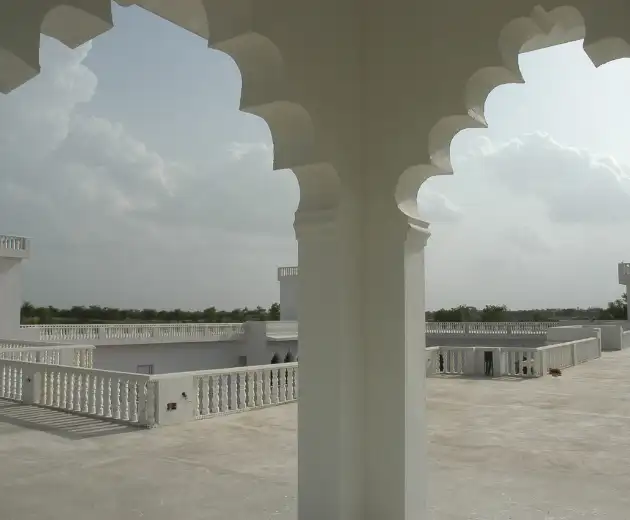
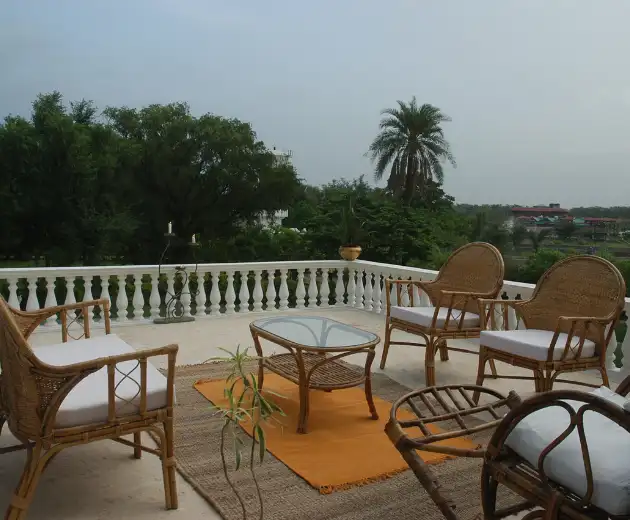
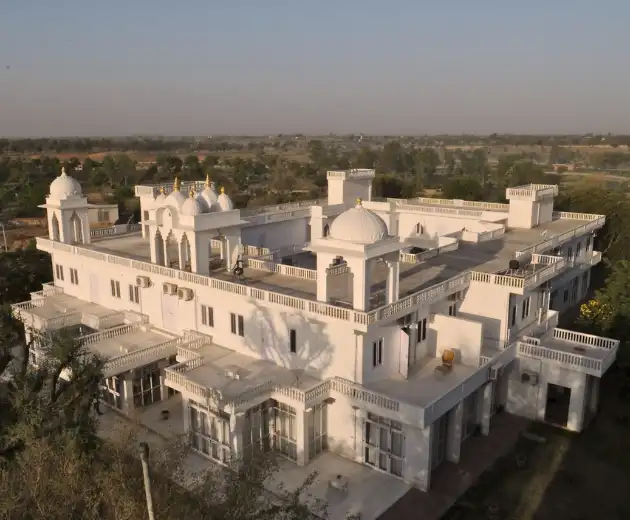
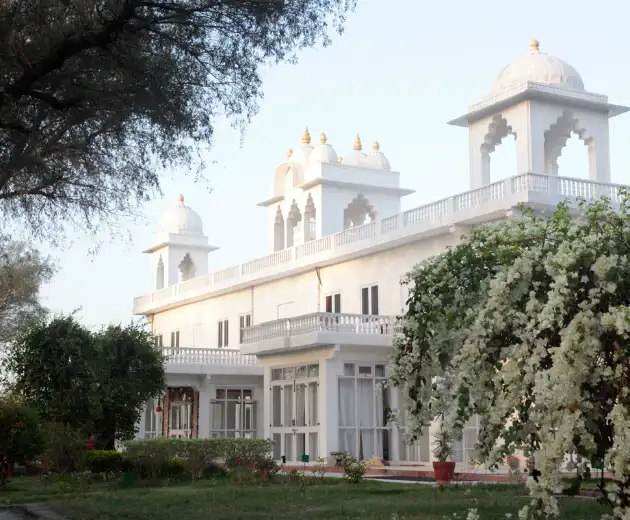
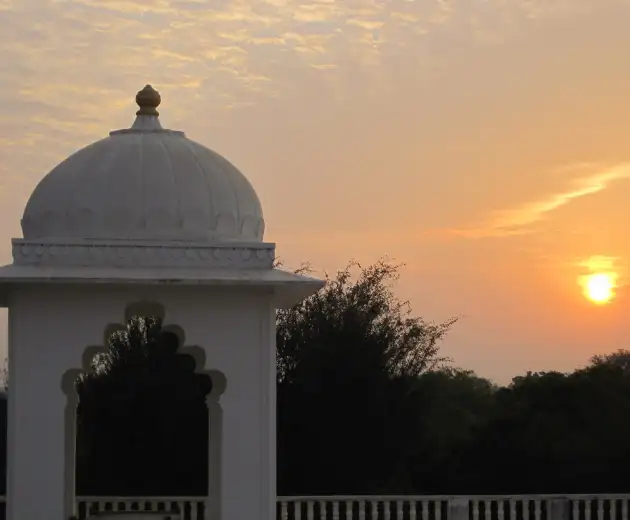
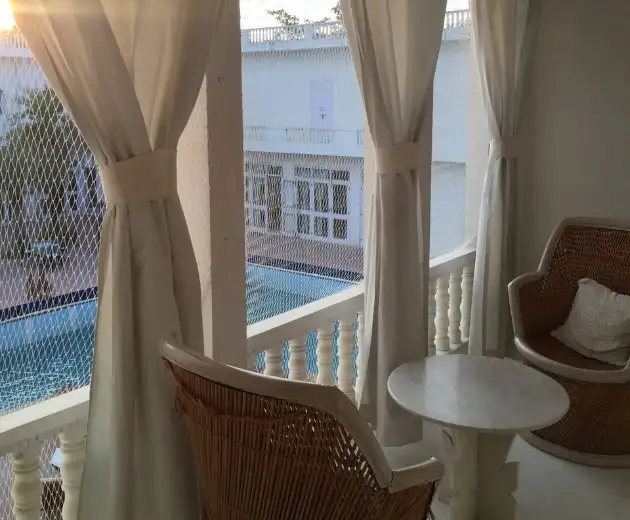
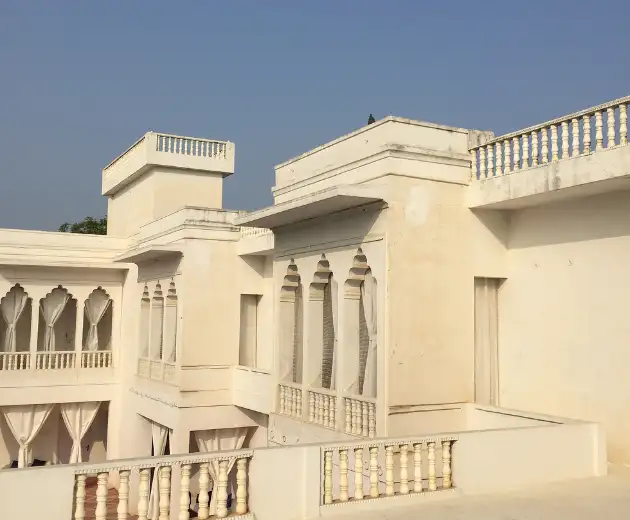
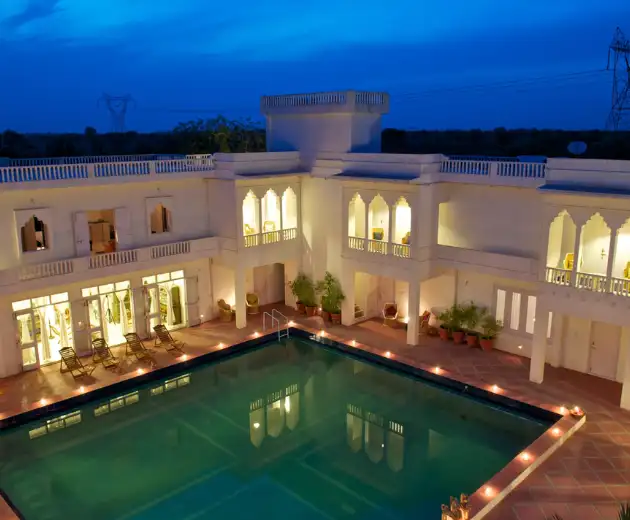
Haveli
Haveli is the term used for a private mansion in South Asia, usually one with historical and architectural significance. The word haveli is derived from the Arabic haveli, through the Persian hawli, meaning “an enclosed place”. Havelis share similar features with other mansions derived from Islamic architecture such as the traditional hawlis in Morocco.
The Savista haveli blends traditional architectural design with comfortable modern interiors. It houses 14 bedrooms and a recreation and dining complex that includes a games lounge, library, movie lounge, music room and several spacious, breezy lounges. The haveli is set in its own gardens of jasmine, champa, parijat, karanji, gulmohur, khejri, neem and some exotic varieties of fruit and non-fruit bearing trees.
The poolside games lounge is outfitted with a table tennis table and a range of indoor board games, as well as a travel library and low level lounging mattresses and cushions set around coffee tables. The separate full-fledged library has a rich collection of reference books on Indian history, religion, culture and philosophy, as well as fiction by Indian and international authors. It also has reading chairs and a work table. It is situated by the pool, and large glass doors behind lead down to the stone-paved amphitheatre and fields beyond. Our intimate movie lounge, complete with cushions and Rajasthani quilts, is ideal for a relaxing evening, with an extensive collection of Hollywood and Indian films, documentaries, and TV shows. Guests have access to a guitar, electronic keyboard, harmonica, tabla and harmonium in the music room (which also houses a vintage sitar and veena).
The haveli is WiFi enabled, and guests can connect to the internet anywhere in the complex via their laptops, tablets, or mobiles.
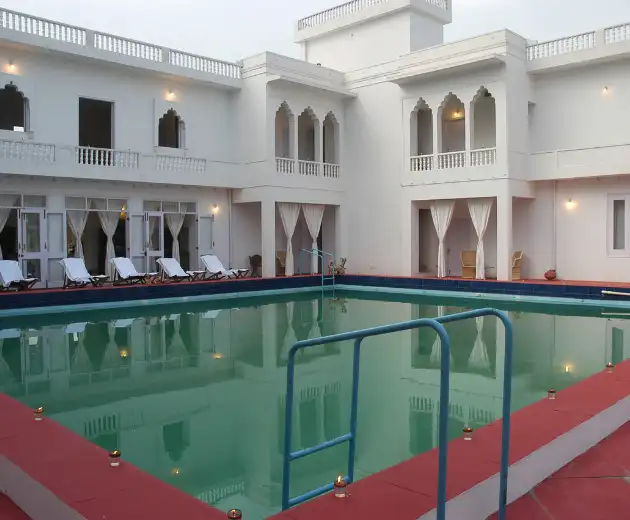
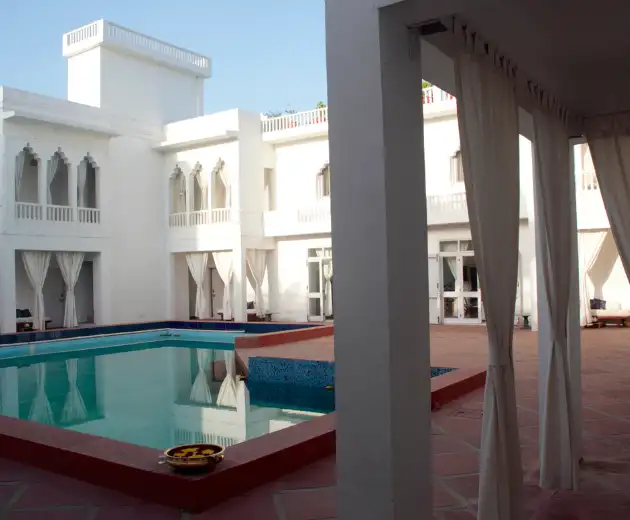
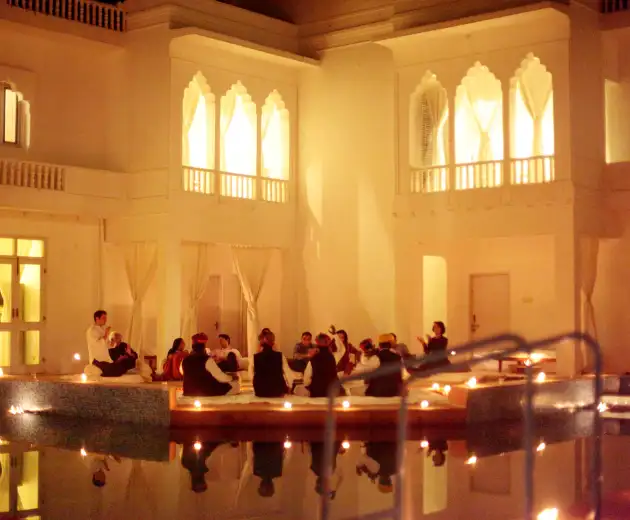
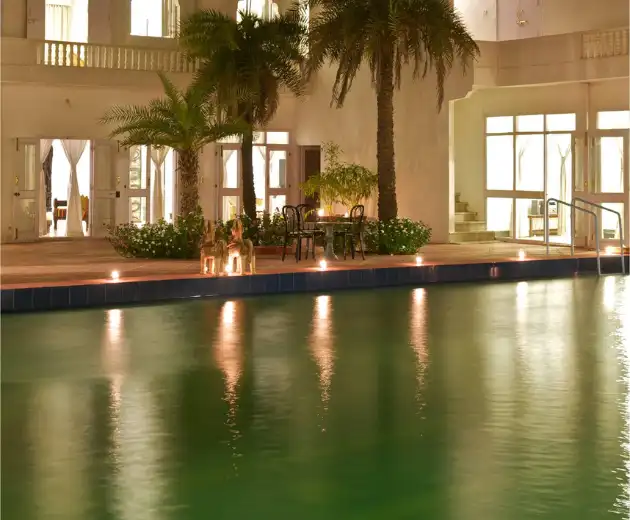
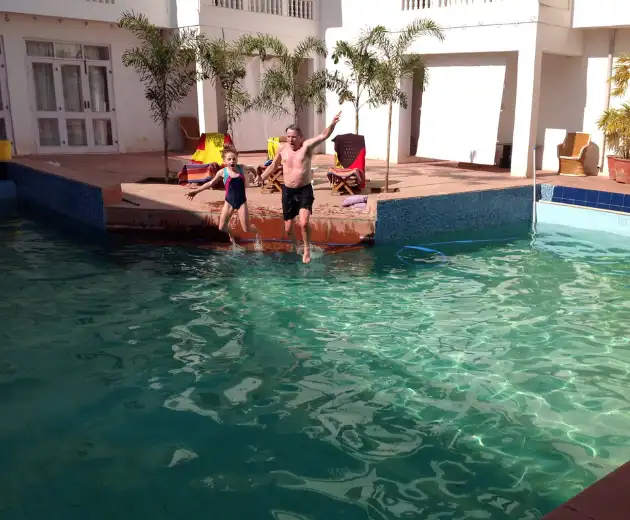
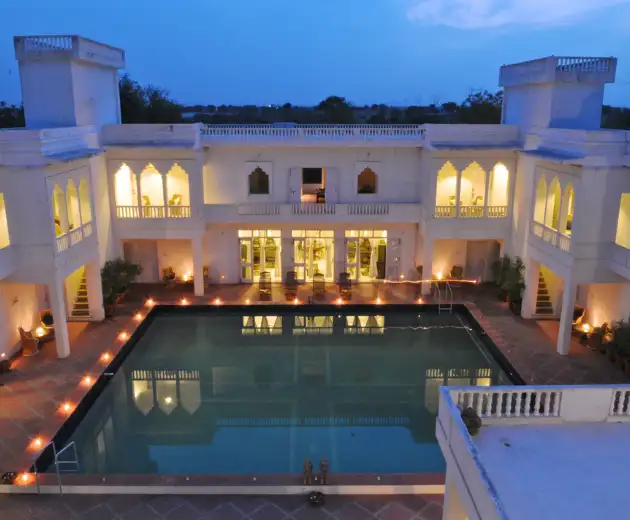
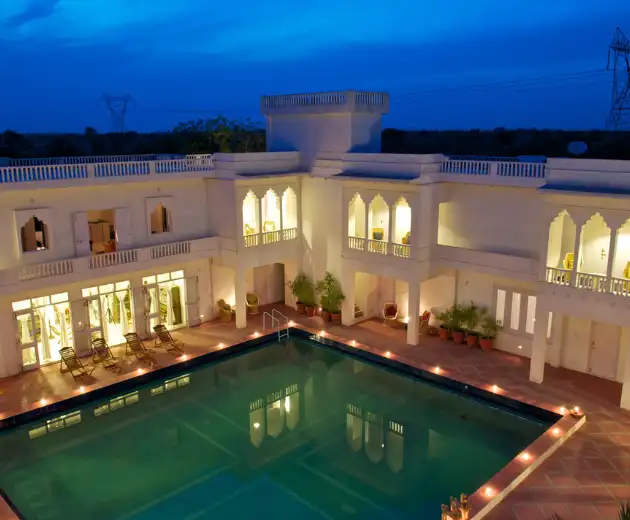
Pool court
The haveli rises in two levels around a central pool-court, overlooked by balconies and terraces that girdle the entire complex. The 15 metre long swimming pool is of environmentally conscious design. Its water is continuously recycled, with one-fourth of the pool being refilled each day with fresh, cool water, which replaces the water that goes to irrigate the surrounding gardens and farmland.







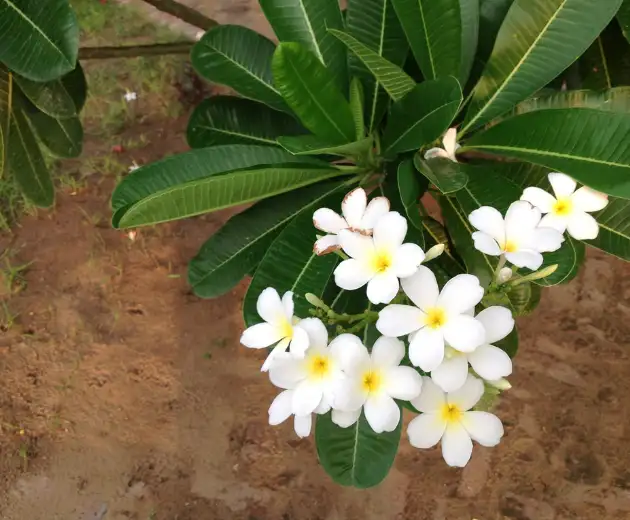
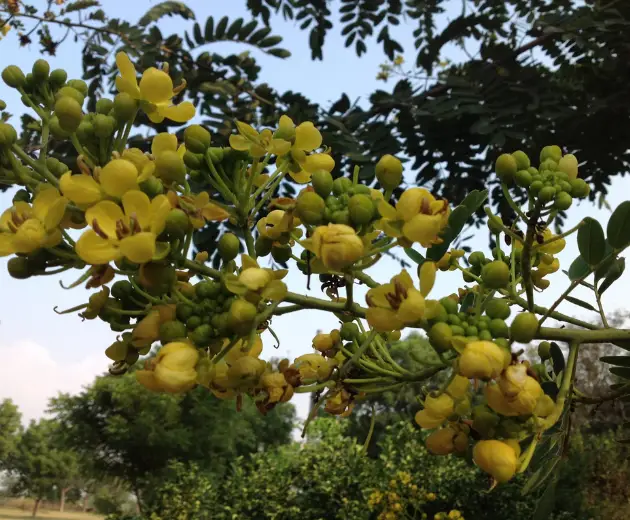
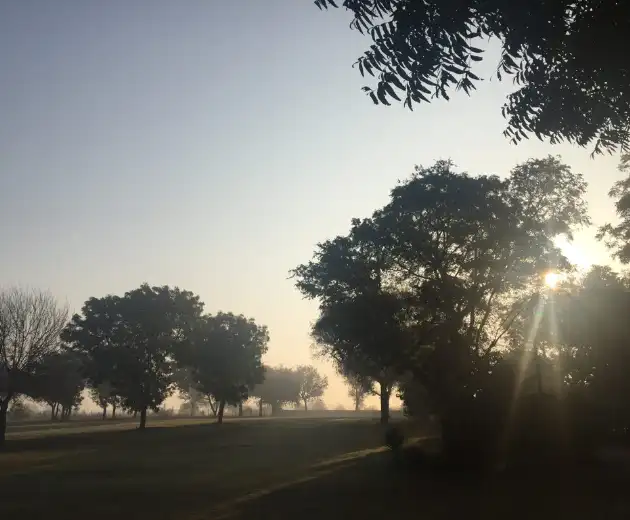
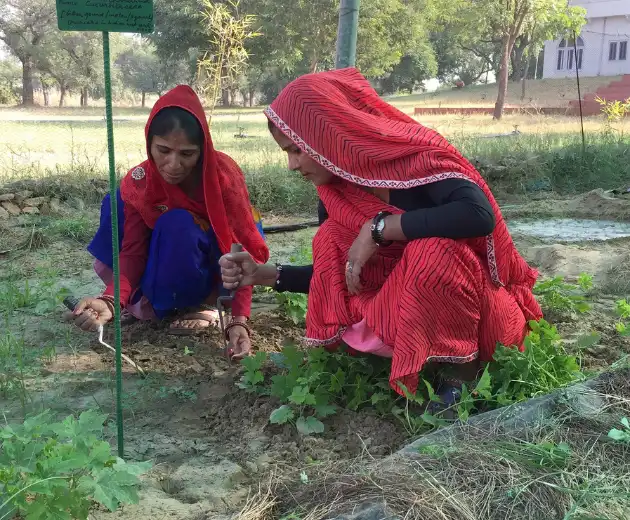
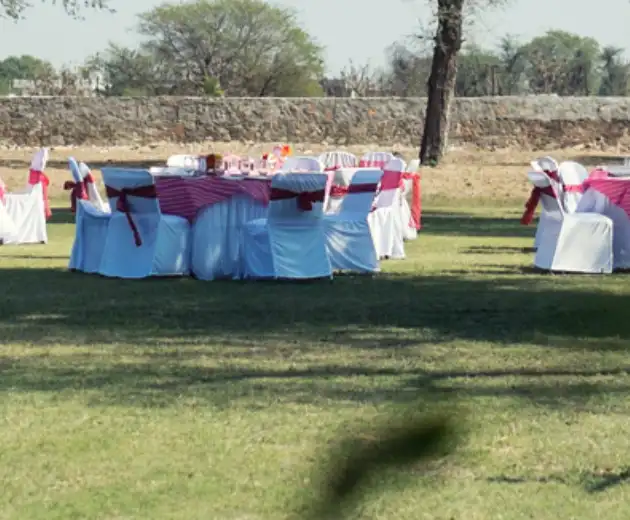
The Grounds
The Savista estate consists of 12 acres. Although extremely modest by international standards, it is in keeping with the average size of farms in India.
The grounds are filled with trees and ornamental shrubs, flowering shrubs line all the pathways, there are extensive lawns that stretch across the front and sides of the haveli, to the north and west the lawns gently give way to cropland, there is a nursery at the rear dedicated to vegetable cultivation, and the estate is ringed with a rough-and-ready walking/jogging track.
The trees are a mix of shade, flowering, fruit bearing varieties: lime, guava, pomegranate, custard apple, neem, khejri, gulmohur, moringa, banana, gooseberry, mulberry, jamun, wood apple, ber, silk cotton, mango, arjuna, kachnaar, karanji, ashoka, jacaranda, palash, Siamese cassia.
The shrubs are both aromatic and ornamental varieties: jasmine, champa, parijat, chandini, hibiscus, lily, lotus, rose, oleander, marigold, golden tecoma, bouganvillea, passion flower, quisqualis, golden duranta, ixora, lagerstroemia, firebush. All the trees and shrubs are local varieties, known for their hardiness and low water requirement. The lawns are composed of local varieties of grass that are hardy and suited to the extreme climatic variations of the region. And every year in the monsoon season, we plant new trees and shrubs.
This dense tree cover in the estate ensures that the temperature at Savista is at least a few degrees cooler than in the city of Jaipur. The tradition in India of planting Neem trees around a dwelling – a practice that we follow at Savista – is based on the belief that it disinfects and cools the air. Almost all the trees at Savista have medicinal properties, again in keeping with the Indian tradition of planting trees around a dwelling that are also a health resource.
The seasonal crops grown at Savista are only for consumption within the property. The cereals, legumes, oilseeds grown are: wheat, barley, millets (bajra and jowar), moong and gavaar beans, sesame and mustard seeds, respectively. The seasonal vegetables grown are: spinach, carrot, tomato, fenugreek, salad greens, cabbage, cauliflower, aubergine, okra, spring onions, garlic, radish, turnip, runner beans, French beans, string beans, etc., while cilantro, curry leaves, mint, ginger and basil are the main herbs grown.
The important thing to mention is that all of the above crops are organically grown. The Savista soil is naturally rich, helped by the fact that sections of the farmland are left fallow by rotation. Organic (farmyard) manure is the only fertiliser used, and neem-based (natural) pesticides are employed.
One of the fallouts of the tree cover and organic practices is that Savista is home to an ever-growing population of local birds which, at last count, were at around 85 varieties. Our birds are as important as the humans at Savista, and a source of much of the joy and serenity that Savista exudes.
The grounds, thus, are what sustain Savista. They offer numerous seating and relaxation and activity options for guests outside of their rooms: hammocks, garden seats and benches, string beds, swings, and basket chairs; birdwatching, tennis, walking, jogging, foot reflexology and yoga. This is in addition to the multiple communal relaxation and socialization spaces within the haveli itself.
Breakfast is served in the open – in the eastern court – in all weathers, under the trees and surrounded by flowering hibiscus. In cool weather, dinner is also served in the outdoors, under the gazebos or in the courtyard of the haveli. Only for four weeks during the coldest period of the winter are dinner and drinks served in the indoors restaurant, with its log fires and candles softly lighting the interiors.
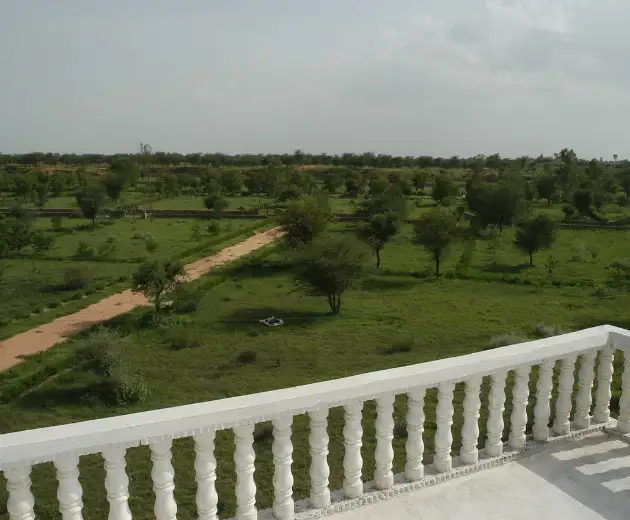
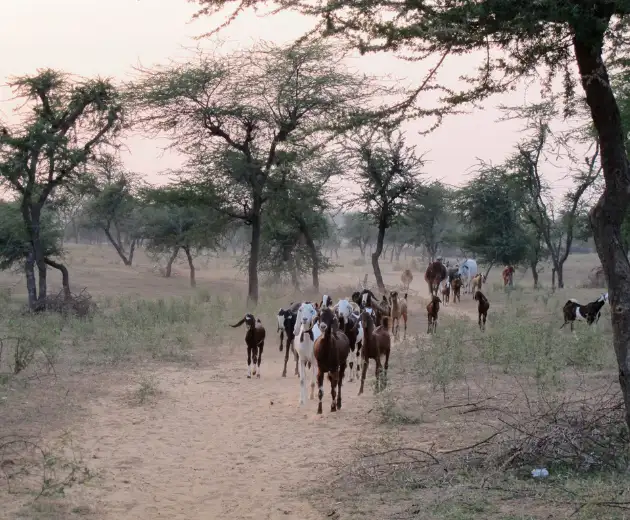
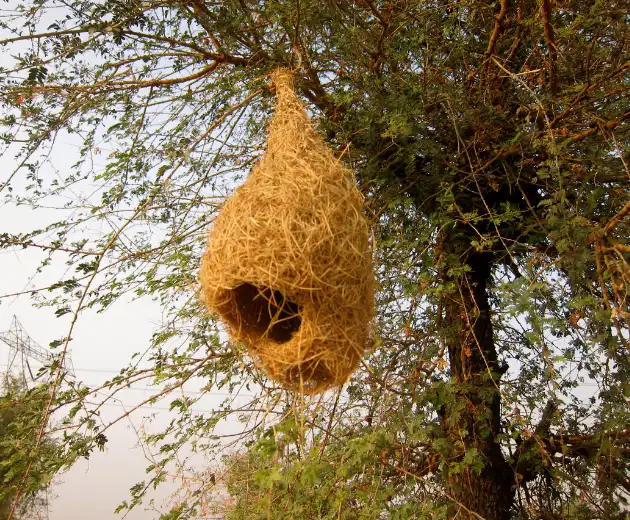
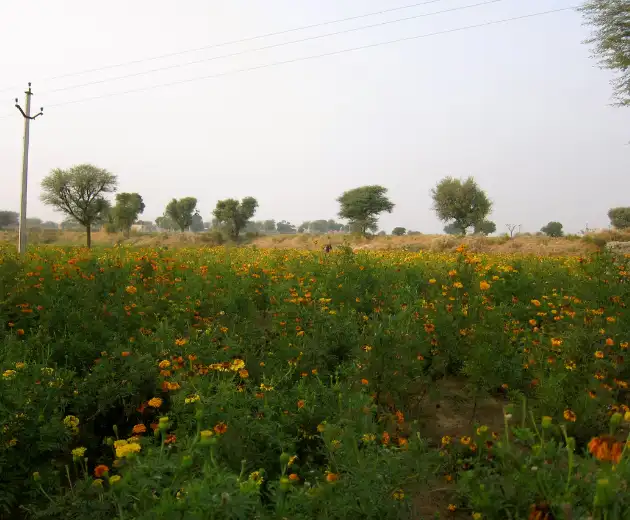
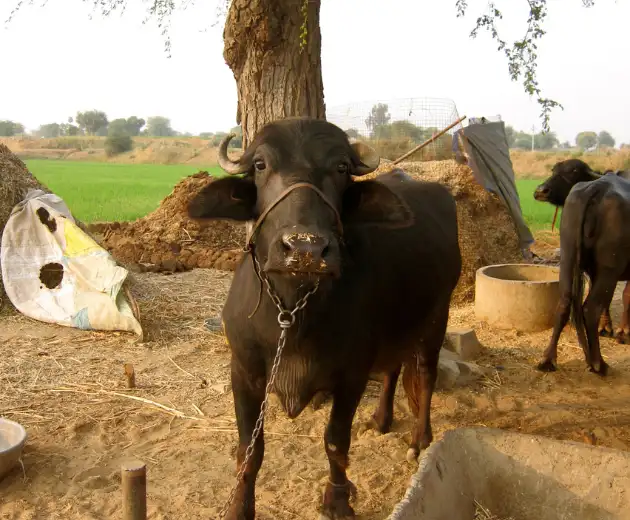
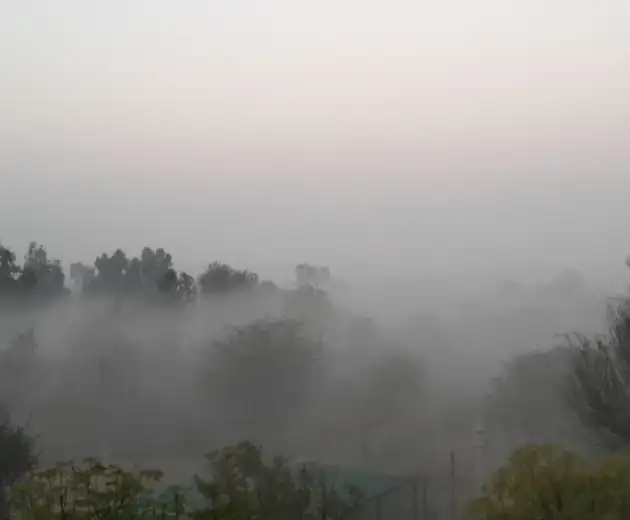
Countryside
Savista’s unique location in the tranquil eastern Rajasthan countryside offers a welcome relief from the sensory overload of frenetic urban India. The retreat’s quiet environs was until recently dominated by dense greenery, wooded ravines and undulating cropland interspersed with sand dunes. It must, however, be said that with the impending march of urbanisation, this is now being slowly dented as Jaipur city inches towards its rural hinterland, causing wilderness spaces to shrink. Mercifully, though, the environment remains principally rural and agrarian. The climate is moderate desert – brilliant cloudless days and crisp clear starlit nights.
The countryside around Savista offers several exciting activities for the outdoor enthusiast. Leisurely camel cart rides can be done through the surrounding fields and farms, or along the wooded river-bed of the now-dry Sujalam river, or through the hamlets of Sanjharia, Himmatpura and Begas. Guided adventure hikes along ravines and brush landscape, through grazing grounds of nomadic herders of camels, goats and sheep, and wild nilgai, are another option. Bird-watching in and around the Savista estate, where over 85 varieties of bird species have been identified to date, is yet another exciting activity.
The ravines, cut by a now-dry river – Sujalam – that used to flow alongside the estate, lend drama to the landscape around Savista. The dry river bed offers a hiking trail through brush and tall kusha reeds all the way to Bagru (8 km away, a medieval town and erstwhile Kacchawa principality which is famous today for its block printing craft). Nomadic pastoralists bring their camels, sheep and goats to the ravines to graze, and herds of wild nilgai – a species of antelope protected by the villagers as sacred animals – roam the countryside. Other scenic walking trails pass through fields, little hamlets, and the larger villages of Fatehpura, Himmatpura and Begas.
Interested guests requesting for guided walks or camel cart rides have the opportunity to meet and exchange greetings with local people, visit homes to share a glass of tea, observe women churn butter or tend to livestock, watch and talk to women and men carrying out seasonal agricultural operations, or visit any of the schools in Sanjharia village where Savista is located. Agriculture is the main occupation in these parts, with dairying and camel herding as a subsidiary activity. The main crops grown are wheat, barley, chick-peas, beans, millets (bajri, jowar), mustard, peanuts and seasonal vegetables.
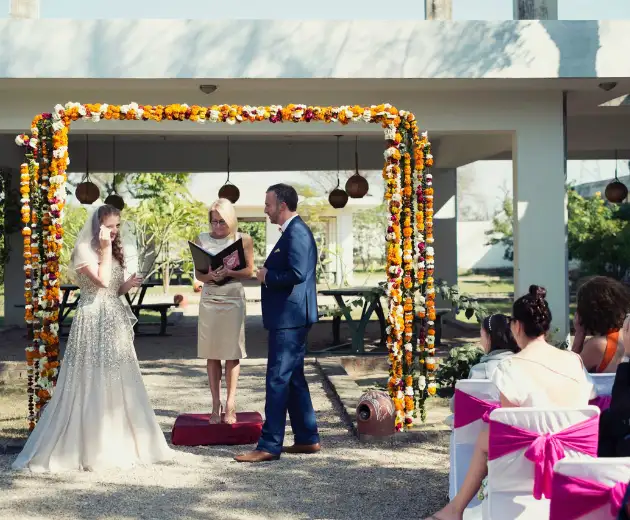
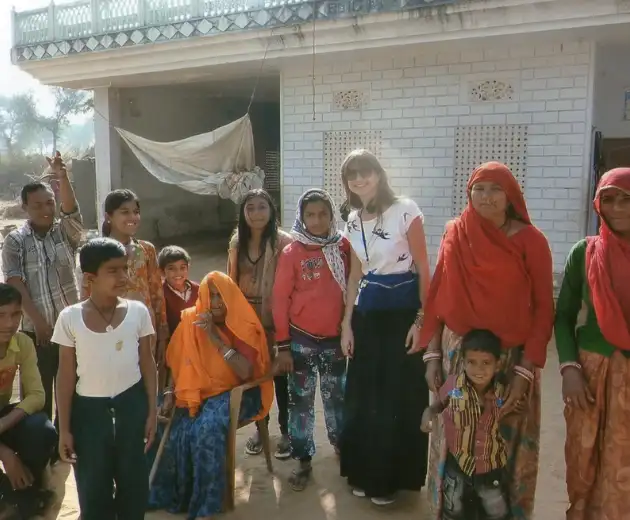
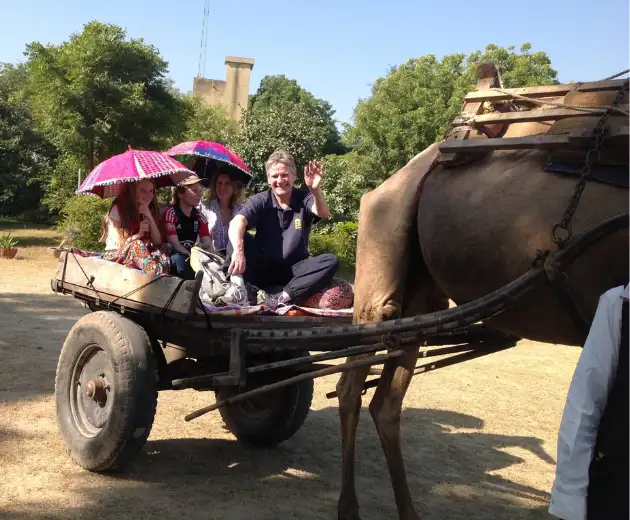
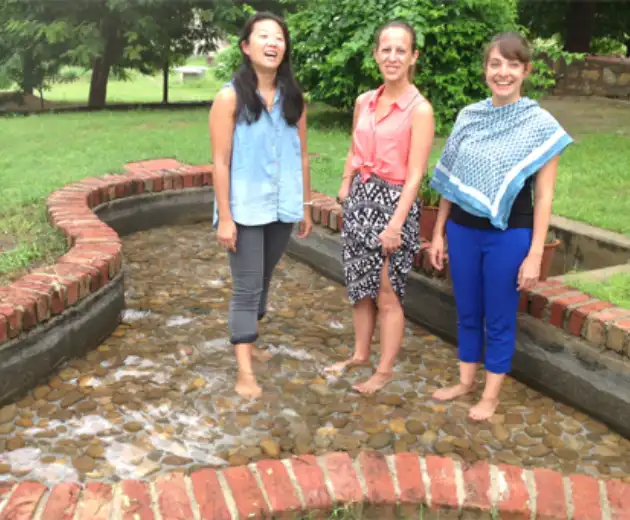
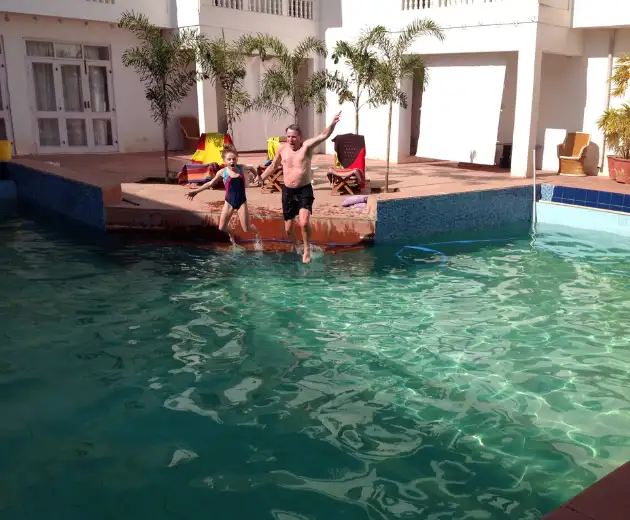
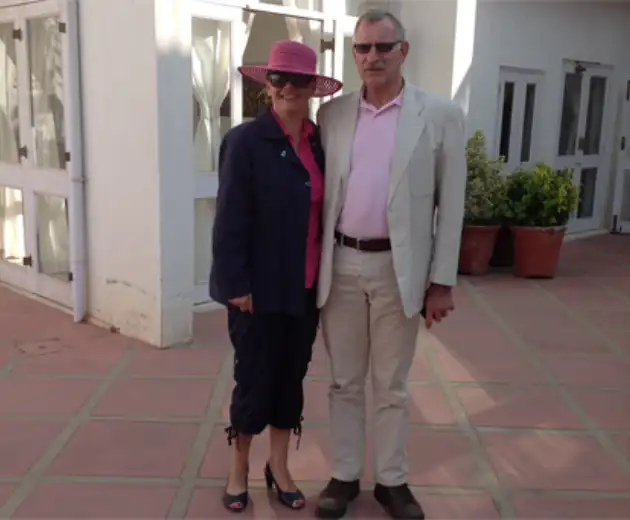
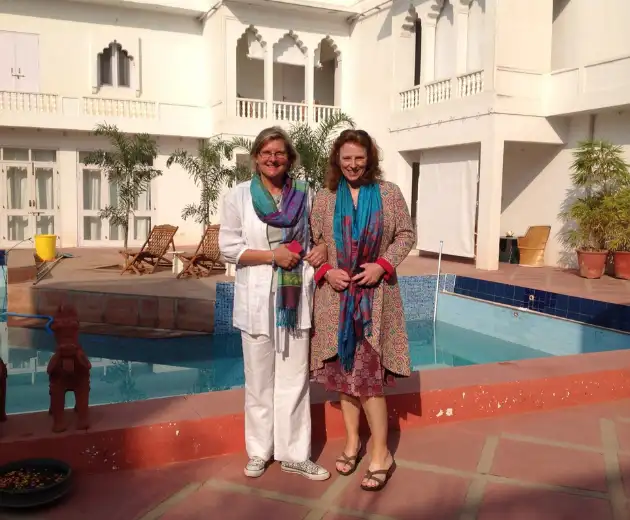
Guest Photos
What our guests are saying…
Savista is exactly the sort of place one hopes to find on a visit to India. The place is a delight, the staff genuinely friendly, the pool extraordinary, the rooms individually designed, and the food delicious. What makes it extra special is that the warm and welcoming hosts treat you like friends.
– WENDY W., WALES, ON TRIPADVISOR
What a lovely hotel! We were taken back by the location, the peace and quiet and the stunning rooms. I believe it is a new establishment and what a fine job the owners have done.. Rooms: Spotless, tasteful and spacious not to mention comfortable. Service: Nothing is too much trouble for the owners.
– DANIELLE D., WALES, ON HOTELS COMBINED.COM
I had heard so much about Savista but it exceeded every expectation. A true retreat in a wonderful place. We enjoyed delightful service and surroundings, sunrises, sunsets and the food was far too delicious! Additional benefit was easy access to Jaipur – a fascinating, colourful and characterful city – and miles away in every sense from Europe.
– ROSEMARIE C., LONDON, ON TRIPADVISOR
Savista Retreat proved to be everything that I had hoped for. A very beautifully restored and furnished country hunting lodge turned ecological retreat by the current family After traveling alone for 3 weeks, I was made to feel as if I had returned to visit good friends from India who are deeply passionate and knowledgeable about their country and local environment.
– TINA N., LONDON, ON ALASTAIR SAWDAY’S
Our stay at Savista was exactly what we’d hoped for. The comforts of a superior branded hotel with the added charm and character of a lovingly restored, historical home… The beds with their cozy down duvets, were our most comfortable nights in India… Food was fresh and tasty and they were more than happy to accommodate special requests. We booked in for four nights and stayed five. Not to be missed!
– VICKI D., CANADA, ON TRIPADVISOR
Wonderful and peaceful place to stay in Jaipur, far from the noise and pollution. It is a very comfortable place to enjoy to relax, have a rest in an Indian Decor. Thanks a lot to the staff and owners for their hospitality. It was just simple and perfect!
ABDELAZIZ, BAHRAIN, ON BOOKING.COM
This hotel was listed in the Guardian newspaper under top 20 best boutique hotels in India… WE AGREE … The owner and staff are what made our stay one of the most amazing experiences of our trip to India (We’ve been 3 times to India). We thoroughly enjoyed the camel cart ride to meet the local families and drink gallons of delicious chai.
– AIBHINN, IRELAND, ON TRIPADVISOR
What can I add to the enthusiastic reviews already here — reaffirmation that they are completely accurate. And more, that the owners/hosts are warm, intelligent people you will be delighted to sit at the dinner table with, in animated conversations about your lives, theirs, and world affairs. This is NOT your usual hotel experience!
– PETER S., NEW YORK, ON TRIPADVISOR
If only we could have stayed longer!… Savista is superb: beautiful lush gardens; a character-filled house with comfortable, clean and spacious rooms; delicious local homestyle meals; and welcoming, personalized and professional service. Being in the countryside enabled us to discover Jaipur by day and mellow out by night. We could not have hoped for a better stay.
– ANOUCHKA I., DUBAI, ON TRIPADVISOR
We had a brilliant stay at Savista, a quiet, serene, idyllic and eco-friendly place in the countryside. The hosts are a lovely, charming and knowledgeable married couple who are doing great work with and for the local community in this poor part of Rajastan. Learning about their work made the stay at Savista even more enjoyable and interesting. The food was delicious too. Savista was a much welcomed contrast to the business, noise and chaos of Jaipur. A bit tricky to get there, but well worth it when we did.
– MARIANNE L., OSLO, ON BOOKING.COM
I can highly recommend this hotel for travellers looking for tranquility (no package tour groups!!) and a personal touch to their stay. The hotel arranges transportation to all interesting sites in the vicinity, so no need to worry about that. Do not look further and make the booking. You will not be disappointed!
– MADRONA32, SEATTLE, ON TRIPADVISOR
We arrived at Savista Retreat after staying at the Trident hotel in Agra .. and found Savista totally different for all the right reasons. It’s personal, and it’s authentic. The best thing I can say about the Savista Retreat is that during our time there we felt fully relaxed, with all our requirements taken care of by our hosts, and by staff never short of a genuine smile.
– RICHARD H., LEEDS U.K., ON TRIPADVISOR
I was told about Savista by a friend, and I am so glad that I was! I was finishing up a hectic week in Jaipur and set aside two nights at Savista to take a break. It was just the thing! … The room we stayed in was pristine and beautiful, with a wonderfully warm sun room just in front. The staff is responsive and efficient and everything right down to the lime soda is refreshing and truly rejuvenating.
– HAIKU, LOS ANGELES, ON TRIPADVISOR
An absolutely wonderful retreat. We stayed for a week, and were sorry to leave, there being so much more to see and do in this part of the region. Savista provides a perfect contrast to the chaotic hustle and bustle of the heart of Jaipur, and it was a joy to return to the tranquility and homely, luxurious comfort of this beautiful haveli, after days out exploring. Our hosts were extremely warm and friendly, and thoroughly attentive in a relaxed and discrete manner, nothing was too much trouble. The ambience of this beautifully restored ancestral home both during the day and at night was calm and inspiring – colourful and well maintained, and a feeling of contentment emanated. We breakfasted and dined outdoors each day, and all the Indian style food we experienced was delicious and varied, and served with a smile! So all that remains is to set a date for our return, and then with a little more time to allow for relaxation beside the beautiful courtyard pool, and opportunity to further explore the lovely semi arid countryside surrounding Savista.
– ANNETTA, EDINBURG, ON HOLIDAYCHECK.COM
The owners are genuinely interested in their guests and we left feeling as if we had been staying with old friends. We learned so much about India through our conversation with them. The hotel itself is beautiful and the atmosphere is one of tranquil and informal elegance.
– MALIA, AUSTIN TX, ON TRIPADVISOR
I have been to Savista twice: once with my family and once alone. Both times were memorable occasions. The service is delightful, the food delicious and the hosts charming… Savista is truly a retreat and I highly recommend it as a place to get away from the bustle of India’s cities and enjoy incredible Indian hospitality.
– M.VERMEER, U.S.A., ON TRIPADVISOR
I would recommend this as a place to stay in Jaipur. The drive into Jaipur can take about 45 minutes which definitely adds time to your day – but when you get back to Savista you realize it was MORE than worth the ride.
– CAROLINE O., LIVERPOOL, ON TRIPADVISOR
If you’re looking for an out-of-the-way getaway and willing to pay a little more, I highly recommend Savista. And especially if you are committed to living — and traveling — as sustainably as possible, this is a great place to check out.
– WAKOT, SAN FRANCISCO, ON TRIPADVISOR
Imagine you had to rate and review your childhood home – a place of love and peace, where your every need was met and you learned so much about yourself and the world around you. That is the task I am faced with here, as I am writing about Savista Retreat where I stayed for 7 nights in February 2012. But I shall try to be objective. As a part of my stay, I had booked a yoga-and-massage-detox package. I learned so much about healthy eating, yoga and the balance of mind and spirit. It was rewarding beyond expectations, but even if you are not up for the detox programme there are plenty of reasons to stay at Savista. The surroundings are beautiful as is the hotel itself. And the Jaipur region offers many sights to see and excellent Indian shopping, which my friend and I discovered on our outings with the personal driver, the hotel has provided for us. But the best experiences of my stay were “back home” at Savista. The sun there is as bright as the smiles on the faces of the local Indian women who work at Savista and who took my friend and I on a tour of the surroundings and bestowed upon us the honor of showing us their homes. I am so thankful for this memorable experience that I would never have gotten anywhere else. And the food!! I could go on and on about how excellent it is! If staying there, do eat at Savista. It’s the best food I had on my entire trip and it is served poolside in the candlelight. A final mention should be given to our hosts who went out of their way to make sure we were comfortable at all times. When a sudden, unusual, and very unexpected cold front made it a little cold inside the palace, they made sure heaters were in place. When I was so unfortunate as to fall and hit my head, our hosts themselves drove me to their own doctor to make sure that I was okay! They are the nicest, warmest people you could imagine as hosts. In short, I recommend Savista with all my heart. Stay there and get an experience that you will carry with you a lot longer than the beautiful tan you can also acquire. You might even be as lucky as l have been and find a place in a far away land that you can call home.
– SIGNE W., DENMARK, ON HOLIDAYCHECK.COM
The rooms are clean, spacious and beautifully decorated. We loved the absolutely delicious homemade Indian food prepared fresh for every meal, and this was the only resort we stayed in during our 3 week trip to India where we did not have to drink bottled water… I highly recommend the camel cart ride through the surrounding local villages where the children love to have their pictures taken and you are always greeted with a steaming hot cup of Indian tea
– KRYSTEN K., NEW YORK, ON TRIPADVISOR
I would recommend this retreat to anyone who wants to relax in a peaceful and pleasant surroundings. Enjoying dinner and breakfast outside… And to just generally chill out. We also went on a camel cart ride which was one of the highlights of our trip – we would highly recommend doing this if you have time.
– HOLDYOURHORSES_8, LONDON, ON TRIPADVISOR
My husband and I stayed at the Savista Retreat at the beginning of our tour of Rajasthan and it was definitely one of the highlights of our trip… Having later experienced other premium hotels in Rajasthan we can also say that it had one of the best bathrooms and by far the best bed! The retreat has a lovely local feel to it- all of the staff come from the village and the food is grown on site.
– JOANNA, LONDON, ON TRIPADVISOR
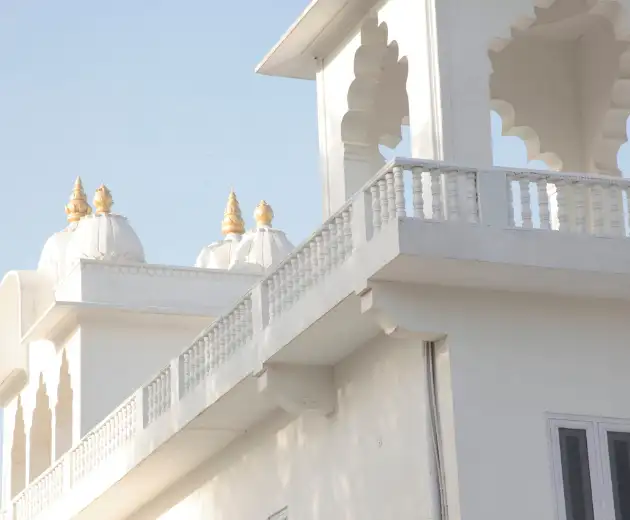
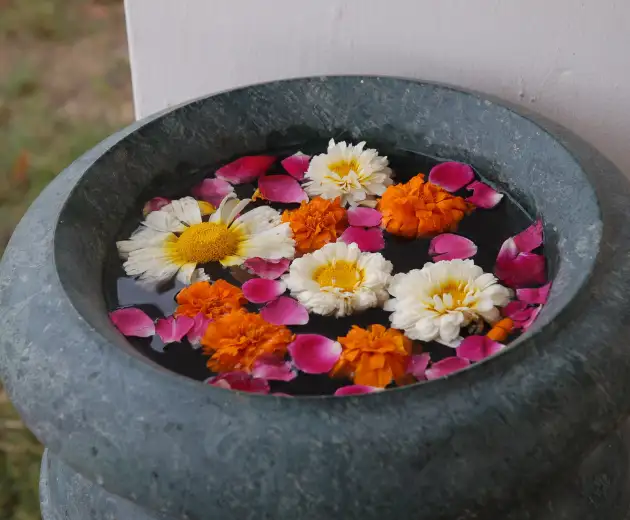
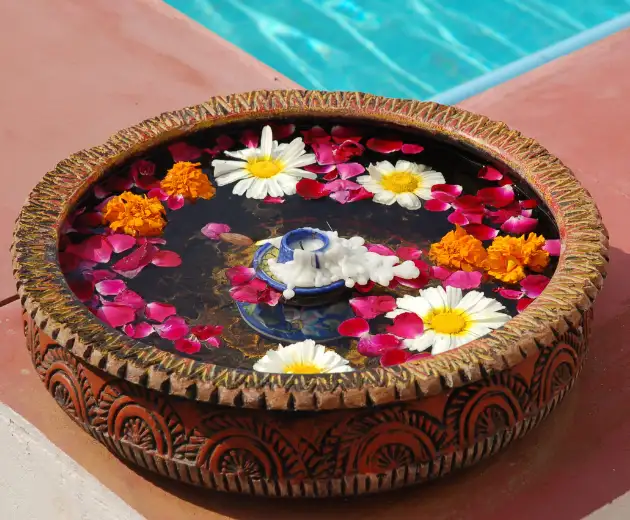
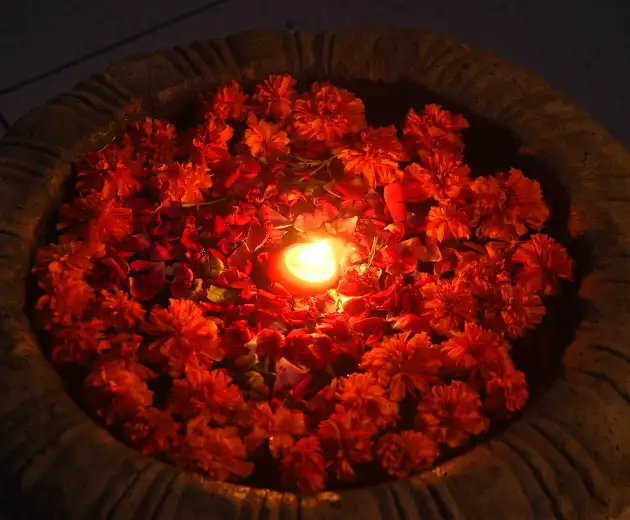
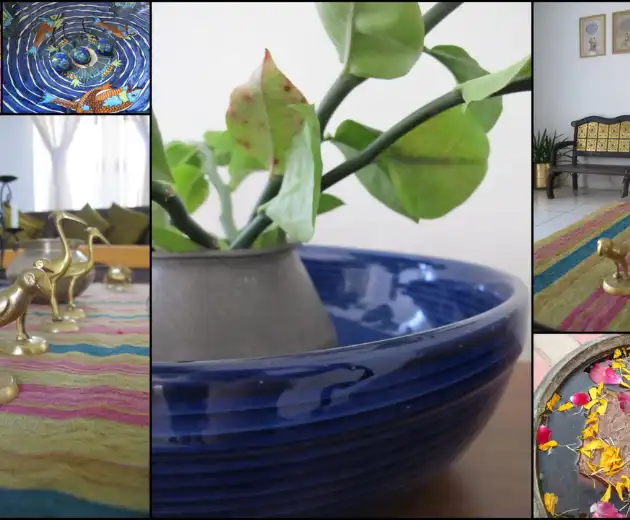
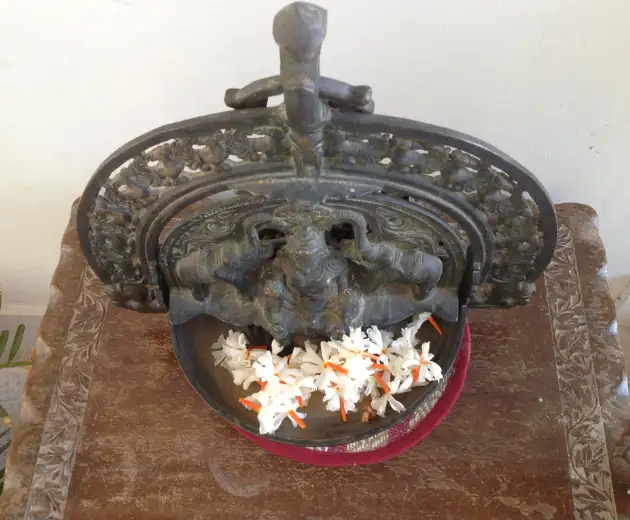
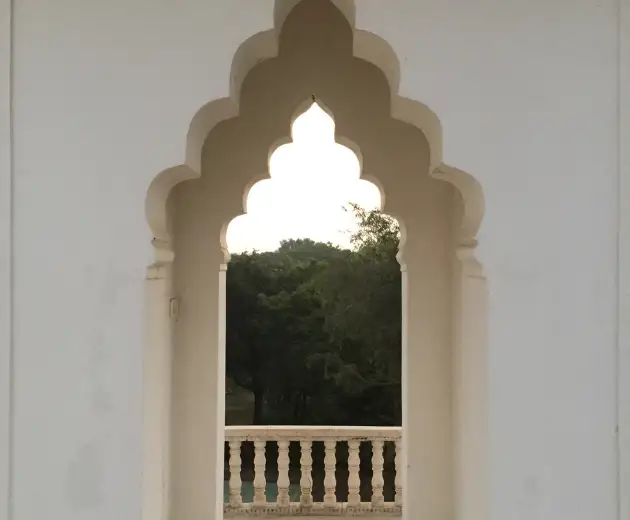
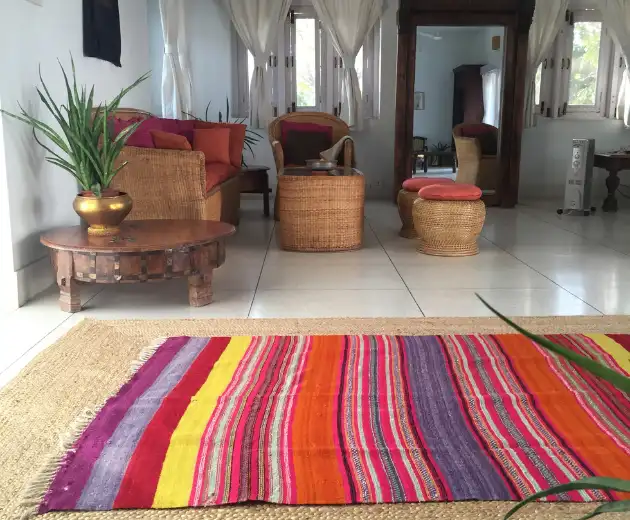
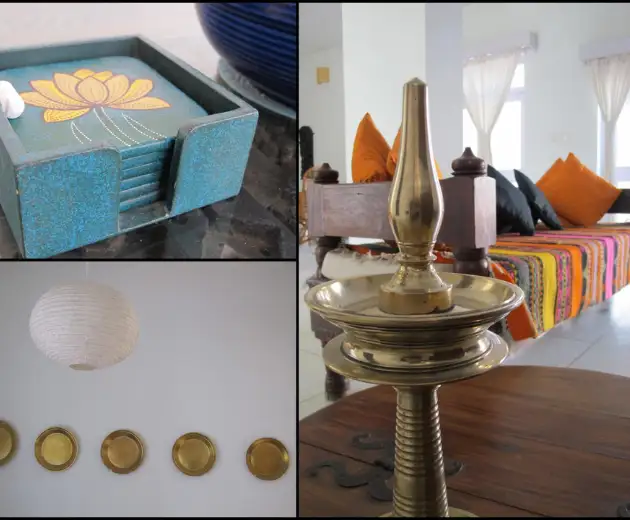
Design Aesthetic
The three crucial spaces at Savista are: the haveli, the eastern complex, and the open spaces consisting of gardens and croplands. Each is designed to have its own unique existence and identity. Yet, each also exists in harmony with the other; and together they exist in harmony with the overall eco-system of the area.
The emphasis is on simplicity, integration of nature and the built environment, and a blend of traditional design elements with modern comforts.
The haveli integrates the inside and outside through the medium of natural stone, greenery, sky and water. The external walls of the haveli are lined with windows and sun terraces that offer unhindered visual access to the expansive natural surroundings. All the built spaces – guest rooms and communal spaces – are integrated with the open inner courtyard where trees and nesting birds, a freshwater pool and open sky provide the natural anchor.
The eastern court which houses the gym, spa, alfresco dining areas and kitchen is set within a grove thick with trees and flowering hedges of hibiscus and henna which sustain busy bird, butterfly and insect activity. This is designed as a space for physical activity and social interaction to the gentle rhythms of the green vista all around. Parrots come right up to the gym door and even try out some gym moves of their own on the tips of branches or ropes of the marquee just outside; sleepy-looking spotted owls occasionally emerge to peer shortsightedly from their tree perches at the breakfast activity in the gazebos; whole families of whooping parrots are absorbed in their own social life; butterflies flit closeby as they drink from the hibiscus flowers; a massage can be had to the accompaniment of twittering birds, topped off with a shower in an open-air green hedge cubicle; and if one is lucky, one of our resident peacocks might even be in a mood to make a flamboyant appearance.
The gardens are integrated with the haveli and eastern court. Their rustic character help them ease their way naturally into the cropland, furrowed fields and wildflowers on the estate, and to remain in sync with the rest of the surrounding countryside.
Another aspect of Savista’s design aesthetic is its blend of the traditional and modern, and the integration of multiple cultural elements. The haveli – originally built as a hunting lodge – reflects the resplendent heritage of Rajput – and partially Mughal – architectural design: the essential features of the central courtyard, the chhattris (canopies/cupolas) on the roof, the balconies with their gently scalloped arches (mehraabs). When it was restored, its integrity in this regard was maintained. The interiors, however, were redesigned to be comfortable and modern with plenty of natural light and air, which meant opening up more windows and enclosing some previously open verandahs. In its present form it would seem to evoke – to the modern eye – shades of ‘Bauhaus’ architecture: clear lines, straight edges, smooth facades, Indian style pavilions, an absence of superfluous features, and a lightness and airiness that together produce a simple but powerful effect.
The recasting of the traditional Rajasthani courtyard – signifying seclusion from the outside – into a unifying ‘pool-court’ also reflects this blend of traditional and modern. The Mughals – originally invaders from the dry Central Asian steppes – exulted in the abundant availability of water in their adopted homeland and designed their residences to have flowing water channels in the interiors. Traditional Rajput architecture borrowed heavily from the Mughals. At Savista, our pool-court with the swimming pool in the centre of the courtyard and the sound of water constantly flowing into it is a traditional aesthetic blended with modern purpose that also enhances social interaction.
The exterior walls of the haveli and eastern court are in all-white – as an environmental measure – as are the curtains in the communal spaces, as a pleasing complement. The interior décor of the haveli integrates natural themes with beautiful craftsmanship. The attempt is to blend artefacts that are local to Rajasthan’s classical and folk traditions with those drawn from other regions of India, as well as modern elements that reflect contemporary purpose and utility.
